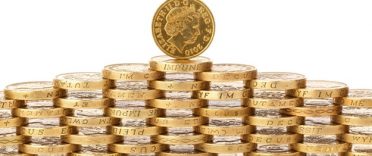
The latest data shows that there were nearly 12 million active adult ISA accounts in 2022 suggesting that it is a popular way to save in the UK. This figure is for all types of ISAs, including Cash ISAs, Lifetime ISAs, Innovative Finance ISAs, and Stocks and Shares ISAs.
Stocks and Shares ISAs are the second most popular type of ISA on the market right now. Let's take a look at how Stocks and Shares ISAs work and whether they're right for you.
How does a Stocks and Shares ISA work?
In the 2024/25 financial year, you can invest up to £20,000 across all your ISAs. If you don't use up your allowance, you can't carry it forward. If you opt for a Stocks and Shares ISA, you can invest in assets like:
- Stocks and Shares
- Bonds
- Gilts
- Exchange-traded funds (ETFs)
- Cash
You can put cash in your Stocks and Shares ISA and then decide how to invest it down the line. However, cash within your Stocks and Shares ISA won't usually earn much interest so it's not typically a long-term solution.
With a Stocks and Shares ISA, your capital is at risk. This means you could get less than what you put in when it comes to taking your money out. Taking higher risk with your investments can come with better returns depending on how the market performs, however, it can also result in higher losses. Stocks and Shares ISAs have historically outperformed Cash ISAs in the long term, but as with any investment, there's a level of risk involved.
What is a Junior Stocks and Shares ISA?
If you are thinking of opening an investment ISA for your child, a Junior Stocks and shares ISA is one option to consider. Junior Stocks and Shares ISAs (JISAs) work similarly to their adult equivalent. They come with the same tax-free benefits and opportunity for growth (as well as losses, because your capital is at risk). However, a JISA has a lower maximum deposit limit. This is currently £9,000 per child for the 2024/25 tax year.
Also, it's worth keeping in mind that JISAs can only be accessed by your child when they turn 18. This is because the JISA, in essence, belongs to them, even though you're contributing on their behalf.
A Stocks and Shares JISA can be a good way to ride out the market in the long term and, depending on how markets perform, you could make a healthy return for your child. However, if you're not comfortable with the risk associated with a Junior Stocks and Shares ISA, you can opt for a cash JISA or a mix of the two. We have a round-up of the best JISA accounts on the market right now here. It's worth bookmarking this article as we update it regularly.
How many Stocks and Shares ISAs can you have?
Previously, you could only open and contribute to one of each ISA type in each tax year, however, this changed when new ISA rules kicked in on 6th April 2024. So in the 2024/2025 financial year, you can contribute up to £20,000 across a number of:
- Cash ISAs
- Stocks and Shares ISAs
- Lifetime ISAs (which can be either a cash LISA or a stocks and shares LISA)
- Innovative Finance ISAs
New ISA rules mean it is easier to benefit from having multiple ISA accounts. Check out our latest ISA cashback offers and fee-free deals.
Can you transfer a Stocks and Shares ISA?
You can transfer your Stocks and Shares ISA to a different provider at any time for any reason. For instance, you could do so if you've found a platform with lower fees or even if you want to switch from Stocks and Shares to a cash ISA or vice versa.
As long as your intended provider accepts transfers, this is usually a fairly straightforward process that involves you filling out a form to process the transfer. There are some rules associated with ISA transfers, however. We explore these in more detail in our ISA transfer rules article.
Cash ISAs vs Stocks and Shares ISAs
By the end of 2022, there were 11.8 million adult ISA accounts in the UK and 61% were cash ISAs. The second most popular ISA type in the UK is a Stocks and Shares ISA. But, the tide seems to be turning. The number of Cash ISAs decreased by 920,000 between 2021 to 2022 compared to 2020 to 2021, while the number of Stocks and Shares ISAs increased by approximately 345,000.
Cash ISAs and Stocks and Shares ISAs are very different in terms of how they work, but they are not necessarily mutually exclusive. Cash ISAs are essentially savings accounts with tax-free perks, while Stocks and Shares ISAs are a way to invest in various assets - such as stocks ETFs, and bonds - and earn tax-free returns. They are a riskier way to make your money work for you but they can come with higher returns.
Cash ISAs generally work better for short-term savings and if you want a guaranteed return. Stocks and Shares ISAs, on the other hand, can result in better returns over the longer term. However, this type of account works best if you're prepared to leave your funds invested for at least a few years so you can benefit from market growth. Your capital is at risk, which means you could get back less than what you invested.
Can you have a Cash ISA and a Stocks and Shares ISA?
Yes, you can open and contribute to both a Cash ISA and a Stocks and Shares ISA in the same tax year. This option could work well if you have both short-term and longer-term savings goals. Whether this makes sense for you depends on how much money you want to put away and what your savings goals are. The table below summarises the key differences between cash ISAs and stocks and shares ISAs to help you decide which one suits your needs better.
| Cash ISA | Stocks and Shares ISA | |
| Stocks | |
|
| Bonds | |
|
| ETFs | |
|
| Cash | |
|
| Maximum annual deposit | £20,000 | £20,000 |
| Benefits | Low risk and tax-free; you earn the advertised interest rate | Potential for better returns over a longer period; tax-free |
| Limitations | Gains based on the interest rate on offer; can be lower than with Stocks and Shares ISAs | Capital at risk; your investments can go up as well as down |
| Best for... | Short-term goals where you might need access to your money in a few months but want to earn interest in the meantime | Long-term goals where you won't need access to your money for a few years and can benefit from market growth |
Check out our article to help you work out whether Stocks and Shares are worth it. Within it, you'll find a table comparing returns from Cash ISAs and Stocks and Shares ISAs over the last few years. While that's a helpful point of reference, keep in mind the golden rule: past performance does not guarantee future results. Just because a specific fund has done well previously does not mean it will continue to yield good results.
Stocks and Shares ISAs vs Pensions
Stocks and Shares ISAs and private pensions can both be tax-efficient ways to save for retirement. People with workplace pensions who have matching contributions from their employers may choose to max out their contributions before considering a Stocks and Shares ISA. Not doing so is essentially leaving money on the table.
However, everyone's circumstances are different, so this might not always be the best choice. For instance, if you have a private pension, you might be wondering whether it's worth contributing to it or whether an ISA might be the better option. ISAs and pensions both come with tax benefits and both work well if you're saving for the long term. Pensions are essentially savings accounts with tax relief from the government; you get 20% tax relief on your contributions if you're a basic rate taxpayer, but this can increase by up to a further 25%, depending on your earnings.
With a pension, you can withdraw 25% of your total pot, tax-free. Where it differs from a Stocks and Shares ISA, however, is that any income you take after this is liable to tax. Also, as pensions are designed to help you fund your retirement, you can't access them until the normal minimum retirement age (NMPA). This is currently 55, however, it is due to increase to 57 from 6th April 2028.
People who want more flexible access to their savings may therefore opt for alternatives despite the tax benefits associated with saving for pensions. We dig into this question in much more detail in our Pension vs ISA article. In it, we explain more about the inheritance tax implications of both choices, as well as other factors to consider before making a choice.
How to pick a Stocks and Shares ISA that's right for you
Lots of providers offer Stocks and Shares ISAs but they vary in terms of the type of service they offer and the fees they charge. In general, there are two main ways to go about choosing an ISA. You can go for a DIY investment platform or a platform that offers 'ready-made' managed portfolios, sometimes referred to as robo-advisors.
- The DIY (Do It Yourself) approach - You typically won't have a fund manager and instead, you'll pick your own stocks, ETFs, and other assets. You'll build your own portfolio which means you'll have more control over your investments. The upside is that the fees associated with this type of approach are typically lower. However, if you're new to investing and don't have the time to do lots of research, a robo-adviser might work better.
- Ready-made managed ISAs - These are provided by platforms that invest your money in a tailored portfolio of funds on your behalf, typically based on your risk profile. They will then manage the portfolio, making investment decisions along the way, including on when to buy and sell funds, rebalancing the portfolio over time. There are usually slightly higher fees associated with this service when compared to the DIY approach, but they are typically much lower than if you went for a traditional financial advisor.
Some ISA providers offer both solutions. Bestinvest*, for instance, lets you pick between a DIY approach where you select your own portfolio based on more than 3,000 shares and funds or a "we do it for you" approach where they build your portfolio based on your risk profile. If you want to go down the ready-made managed ISA route, we suggest you check out this article on the best robo-advisors in the UK.
Where to find the best Stocks and Shares ISAs right now
Stocks and Shares ISAs are a great tool for tax-free, long-term savings. The best Stocks and Shares ISA for you will depend on your investment needs. For instance, some Stocks and Shares ISAs allow you to pick your own funds, while others may provide a ready-made portfolio that invests your money for you. The fees associated with these different types of Stocks and Shares ISAs will vary.
To help you choose, we have a roundup of the best Stocks and Shares ISAs on the market right now. We update this article frequently so it's worth bookmarking it and keeping an eye on it. We've also put together an article highlighting the cheapest Stocks and Shares ISAs along with tables comparing their fees.
If a link has an * beside it this means that it is an affiliated link. If you go via the link Money to the Masses may receive a small fee which helps keep Money to the Masses free to use. But as you can clearly see this has in no way influenced the above editorial. The following links can be used if you do not wish to help Money to the Masses or take advantage of the exclusive Money to the Masses offers - Bestinvest




